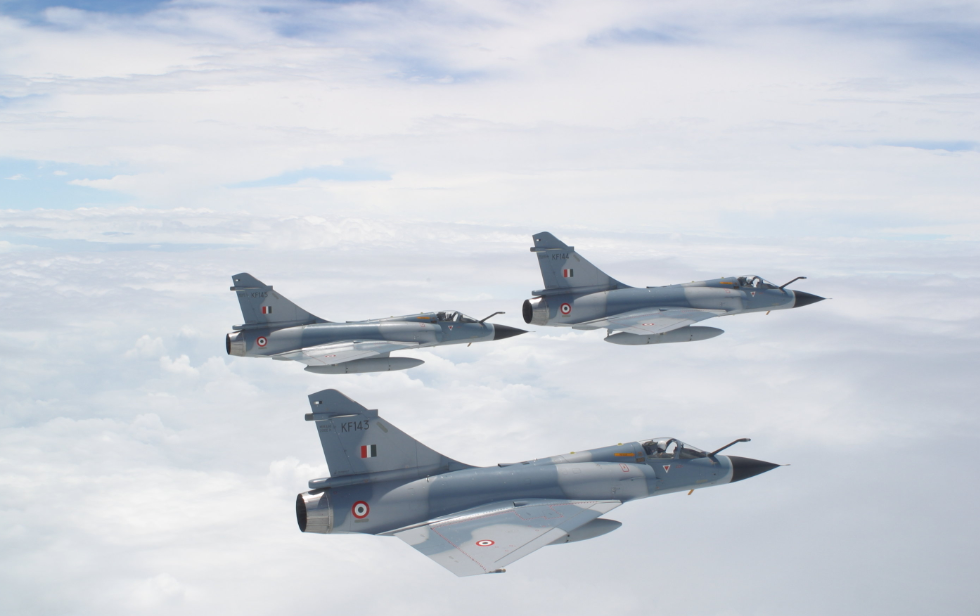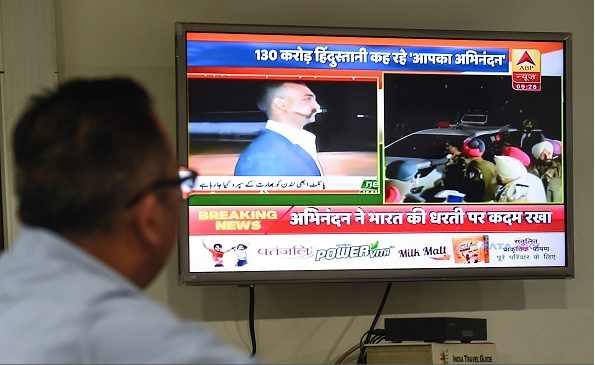
Indo-Pak Crisis Post Pulwama: New Delhi’s Next Steps
By: Tanvi Kulkarni
There are many dimensions to the current crisis that seem to be unfolding between India and Pakistan. As information gets murkier through claims and counterclaims, differing official narratives, and the shifting of strategic goalposts, the evidence-deficit makes accurate analysis of the situation difficult. There are some bare facts and then there is fog, even haze.
The current crisis was precipitated by the terror attack in Pulwama on February 14, in which a local Kashmiri suicide bomber struck an explosive-laden vehicle into an Indian paramilitary convoy, killing over 40 personnel. The Jaish-e-Mohammed (JeM), a Pakistan-based terrorist group, quickly claimed responsibility for the attack. An Indian response to the Pulwama attack was understood to have been necessitated for five reasons: First, New Delhi saw the Pulwama attack as one of the biggest terrorist attacks on India’s security forces, worse than even the Uri attack in 2016, carried out by cadres of the Pakistan-based JeM. Second, the Indian “surgical strikes” after the Uri attack marked a shift in India’s military strategy toward cross-border terrorism. While the surgical strikes were not unusual, its public proclamation in 2017 set a precedent for military response to cross-border terrorism in policy terms and created a commitment trap for India. Third, for the Modi government facing re-election in mid-2019, the Pulwama attack presented an opportunity to prove, yet again its ‘nationalist’ credentials through a ‘hard’ response as punishment to terrorists and to Pakistan. Politically, the Modi government weighed its options between stepping up the game and facing electoral backlash. Expectedly, it chose the former. Fourth, while New Delhi immediately began diplomatic maneuvering, it realized that returns from diplomacy would take time. Besides, New Delhi has also lacked the diplomatic prowess to isolate Pakistan on the terrorism issue. Fifth, there was extraordinary support among India’s influential strategic community for exercising a military option that could test deterrence stability and escalation dominance between the two nuclear weapons powers.
Of at least four military options – a mix of overt and covert kinetic options – that were thought to be the likely Indian response, on February 26, New Delhi went ahead with the airstrikes option. Indian jets reportedly carried out strikes across the Line of Control (LoC) at Balakot inside Pakistan – a clear sign of escalation from the Indian side. The Pakistani response came immediately and equivalently in the form of Pakistan Air Force jets targeting military sites on the Indian side of the LoC. A dogfight ensued over the LoC skies, which ended with Pakistani aircraft being driven back and an Indian MiG-21 Bison being shot down with the pilot falling in Pakistan-administered Kashmir where he was taken into custody by the Pakistani armed forces. Did New Delhi miscalculate? It seems unlikely that the Indian airstrikes were meant simply to signal to Pakistan India’s ability to retaliate at a time and place of its choosing. The pros and cons of a kinetic attack would have been weighed and a Pakistani response would have been anticipated. The official Indian formulation of the Balakot airstrikes as a “non-military, preemptive” strike did not limit Pakistani retaliation (to heightened cross-LoC firing). India also found itself preempted over the choice to escalate or deescalate after its fighter pilot was detained and eventually repatriated by Pakistan.
The fog is yet to clear on whether the Indian Mirages in fact crossed the LoC into Pakistani territory, if the airstrikes destroyed the JeM facility and caused casualties, and whether a Pakistani F-16 was shot down by the Indian MiG-21 jet. These operational questions have consequences for the credibility of claims made by each side. They also have strategic consequences for what options India and Pakistan can exercise in a stand-off in the future. At this point, however, there are three clear gains for India – the strategic gain consists of messaging to the Pakistani decisionmaker of the certainty of an Indian conventional response to sub-conventional attacks choreographed by Pakistan-based anti-India terrorist groups. But uncertainty remains about the nature and scale of the Indian response. Also, that New Delhi could carry out the airstrikes without being restrained by international pressure would be certainly seen as a diplomatic win for India. Finally, the Indian Air Force’s deep penetration strikes into Pakistani territory will be heralded as a military win for India.
At this point, any further escalatory action by India has diminishing marginal utility. Further escalation does not achieve India’s strategic objective vis-à-vis terrorism. These actions would be met by Pakistan’s resolves to ‘re-establish deterrence.’ This is the time for coercive diplomacy in order to mount pressure on Pakistan to take verifiable action against groups like the JeM and the Lashkar-e-Taiba (LeT). As the fog settles, amid election fervor, Indian political and strategic elites might debate New Delhi’s Kashmir policy, India’s intelligence lacunae, and defense procurement and production hiccups. The Indian elite would also do well to question their understanding of deterrence stability in South Asia.
***

Balakot Airstrikes: A Shift from Deterrence by Denial to Deterrence by Punishment
By: Sylvia Mishra
Pakistan’s use of proxy and asymmetric warfare against India and cross-border terrorism emanating from the country continue unabated: the Mumbai blasts (1993); the attack on the Indian Parliament (2001); the Mumbai terror attacks (commonly referred to as 26/11); and attacks in recent years at Gurdaspur (2015), Pathankot (2016), Uri (2016), Sunjuwan (2018), and Pulwama (2019) establish this. These attacks have weakened the Indian state and made Indian citizens and soldiers vulnerable to terrorism. Pakistan has leveraged the threat of nuclear escalation to press asymmetric attacks against India, to ‘bleed India through a thousand cuts’ while evading Indian military retaliation.
In the aftermath of the Pulwama attack, the Indian government responded with airstrikes targeting Jaish-e-Mohammad (JeM) terrorist camps across the Line of Control (LoC) in Pakistan’s northwestern Khyber Pakhtunkhwa province. The strikes are the first of its kind due to three central reasons: first, they were launched deep into Pakistan at Balakot, 80 kms from the LoC; second, the Indian Air Force conducted airstrikes into Pakistani territory for the first time since 1971 and finally, it was a precision attack aimed at neutralizing terrorist camps. The Balakot strikes demonstrated the Indian government’s willingness to step up its efforts to prevent Pakistan from exporting terrorism by utilizing kinetic actions to impose costs and punishment on Islamabad.
Airstrikes in Balakot indicate that India will not allow Pakistan to conduct terrorist attacks in the absence of fear of punishment and retaliation. As Shubhajit Roy writes, with the Balakot strike, India has set a “fresh template for terror response” against Pakistan. Additionally, Balakot also showcases India’s ability to penetrate deep into Pakistani airspace and neutralize targets. The airstrikes have underscored both India’s appetite for escalation and the room for a conventional response below the nuclear threshold. Though the implications of the Balakot airstrikes are still unclear, it is important to note the distinct shift these strikes indicate in the Indian government’s response, especially considering Indian reaction post the Mumbai terror attacks in 2008.
On November 26, 2008, ten Pakistani militants belonging to the terror group Lashkar-e-Taiba stormed buildings, railway stations, and hotels in Mumbai and killed 164 people. It has been referred to as “India’s 9/11”. Like in the aftermath of any major terrorist attack, there was immense domestic pressure on the Indian government to retaliate against Pakistan with brute force. However, the Indian government adopted a series of measures to deter the enemy through denial strategies. Deterrence by denial, as Robert F. Trager and Dessislava P. Zagorcheva have explained, “involves ‘hardening’ targets in the hope of making an attack on them too costly to be tried and convincing terrorists of the state’s determination not to make concessions in the face of terror tactics.” Thus, deterrence by denial depends on coercing the enemy by causing hopelessness.
On the international stage, New Delhi galvanized its efforts and focused on counterterrorism cooperation with the United States, engaging in joint investigative efforts aided by the U.S. Federal Bureau of Investigation. Domestically, New Delhi took efforts to tighten laws and build institutions against terrorism: an amendment to the Unlawful Activities (Prevention) Act and a bill to establish the National Investigation Agency were passed unanimously in December 2008, and a national counterterrorism center was proposed. To foil the efforts of terrorists, New Delhi put concerted efforts into bolstering homeland, maritime, and coastal security and surveillance along India’s entire coastline. In a compelling essay, Shivshankar Menon, who was foreign secretary when the attack happened, has argued that “by not attacking Pakistan, India was free to pursue all legal and covert means to achieve its goals of bringing the perpetrators to justice, uniting the international community to force consequences on Pakistan for its behavior.” Menon argued further that “the real success was in organizing the international community, in isolating Pakistan, and making counterterrorism cooperation against the LeT effective.” Through successful diplomatic efforts, the Indian government post the Mumbai attacks did exactly this–to underscore to the global community the role Pakistan had played in sponsoring terrorism in India. However, India’s deterrence by denial strategy was broadly reactive and defensive and achieved little with regard to deterring terrorist attacks, incursions, and infiltration along the LoC.
Since 2014, the Modi government seems to have been intent on pursuing a combination of deterrence by denial and deterrence by punishment but is more reliant on the latter. The concept of deterrence by punishment involves invoking severe penalties or the threat of severe penalties and punishment that would raise the costs for an adversary to perpetrate an attack. For instance, during the Cold War, deterrence by punishment took the form of NATO being able to deter Soviet conventional aggression in Central Europe with the threat of deep strikes and retaliatory offensives into Warsaw Pact nations. In the South Asian case, there has been a clear trend in recent years that New Delhi is shifting its response – as seen in the aftermath of the Uri attack in 2016 with India’s “surgical strikes” across the LoC and now the Balakot strikes post Pulwama – to deterrence by punishment through counterterrorism operations. The message is clear – if Pakistan continues its support for proxies and asymmetric warfare against India, New Delhi will not hesitate to strike deep within Pakistan with calibrated use of military force and astute use of India’s politico-diplomatic options.
George Perkovich and Toby Dalton have rightly written that to effectively deter Pakistan, India must make “massive overhauls in virtually all aspects of its civilian-military relations, higher defense organization, defense procurements, defense modernization, and service-specific visions of the future battlefields.” It is in India’s interest to bolster its comprehensive national power, strengthen its defense preparedness, and focus on joint training and exercises with the United States, Israel, France and other regional and global powers to have a whole-of-government approach towards deterring terrorism emanating from Pakistan. Balakot is a fundamental shift in India’s own brand of a deterrence by punishment strategy. This approach of “hitting where it hurts” (in this case, Pakistan’s proxies) could continue being India’s response of choice in the future to impose higher punitive costs on Pakistan.
Sylvia Mishra is a 2019 India-U.S. Fellow at New America. Views expressed in this article are the author’s own and do not necessarily reflect those of the organizations with which she is affiliated.
***
Image 1: Indian Air Force (cropped)
Image 2: Prakash Singh/AFP via Getty Images


